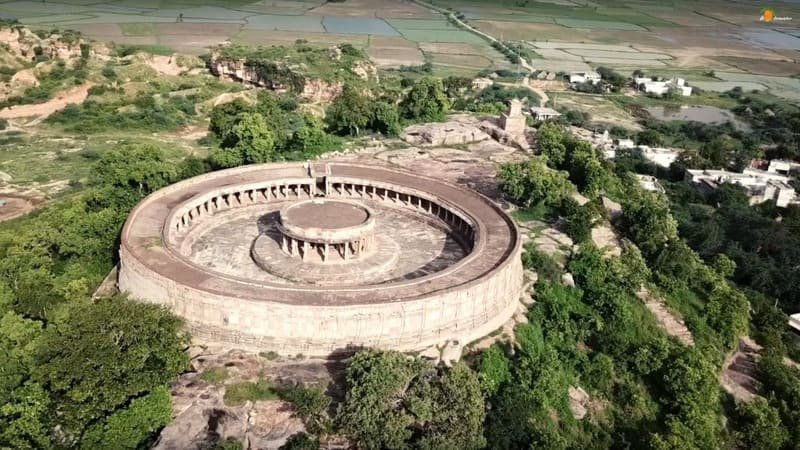
The Red Fort in Agra: A Window into India's Mughal Past.
Red Fort, Rakabganj, Agra, Uttar Pradesh 282001, India.
The Red Fort in Agra, also known as the Agra Fort, is a stunning example of Mughal architecture and a testament to India's rich cultural history. Built by Emperor Akbar in 1565, the fort was originally constructed as a military structure to protect the city of Agra from invaders. Over the centuries, the fort was expanded and renovated by various Mughal emperors, including Shah Jahan, who famously built the Taj Mahal nearby.
Today, the Red Fort is one of India's most popular tourist attractions, drawing visitors from around the world who come to marvel at its grandeur and learn about its fascinating history.
History of the Red Fort
The history of the Red Fort dates back to the reign of Emperor Akbar, who ordered its construction in 1565. The fort was originally made of brick and was called the Badalgarh Fort. In 1573, Akbar moved his capital from Agra to Fatehpur Sikri, and the fort was left in the hands of his son, Jahangir.
Jahangir later made extensive renovations to the fort, including the addition of a palace and other structures. The fort continued to be used by the Mughal emperors until the mid-18th century, when it was seized by the British East India Company.
During the Indian Rebellion of 1857, the fort played a key role in the fighting between the British and Indian forces. The rebels eventually captured the fort, but were unable to hold it for long, and it was recaptured by the British shortly thereafter.
In 1983, the Red Fort was designated a UNESCO World Heritage site, recognizing its historical and cultural significance.
Architecture of the Red Fort
The Red Fort is a stunning example of Mughal architecture, characterized by its use of red sandstone and white marble. The fort is a massive structure, covering an area of over 94 acres and surrounded by a moat.
The fort is entered through the Lahori Gate, which leads to a large courtyard known as the Diwan-i-Am, or the Hall of Public Audience. This open-air hall was used by the emperor to meet with his subjects and listen to their grievances.
Beyond the Diwan-i-Am is the Diwan-i-Khas, or the Hall of Private Audience, which was used by the emperor for private meetings with his advisors and courtiers. The hall is famous for its Peacock Throne, which was once encrusted with precious jewels and was said to be one of the most valuable objects in the world.
Other notable structures within the fort include the Jahangiri Mahal, a palace built by Jahangir for his wives, and the Khas Mahal, a private palace used by Shah Jahan.
Visiting the Red Fort
The Red Fort is open to visitors year-round, and admission fees apply. Visitors should plan to spend at least a few hours exploring the fort and its many structures, including the Diwan-i-Am, Diwan-i-Khas, Jahangiri Mahal, and Khas Mahal.
To make the most of your visit, it's a good idea to hire a guide who can provide you with detailed information about the fort's history and architecture. Audio guides are also available for those who prefer to explore on their own.
The fort can be visited as part of a day trip from Delhi or Jaipur, or as part of a longer itinerary that includes other popular tourist destinations in India, such as the Taj Mahal and the city of Varanasi.
Conclusion
In conclusion, the Red Fort in Agra is a significant monument that has played an important role in the history of India. It is not only a symbol of the power and grandeur of the Mughal Empire, but also a testament to the skill and creativity of the craftsmen and artisans who built it. The fort has stood the test of time and has survived through centuries of wars and conflicts. Today, it remains one of the most visited tourist attractions in India, attracting millions of visitors from all over the world each year. Whether you are a history buff, an architecture enthusiast, or simply looking to experience the rich cultural heritage of India, a visit to the Red Fort in Agra is definitely worth your time and effort.








